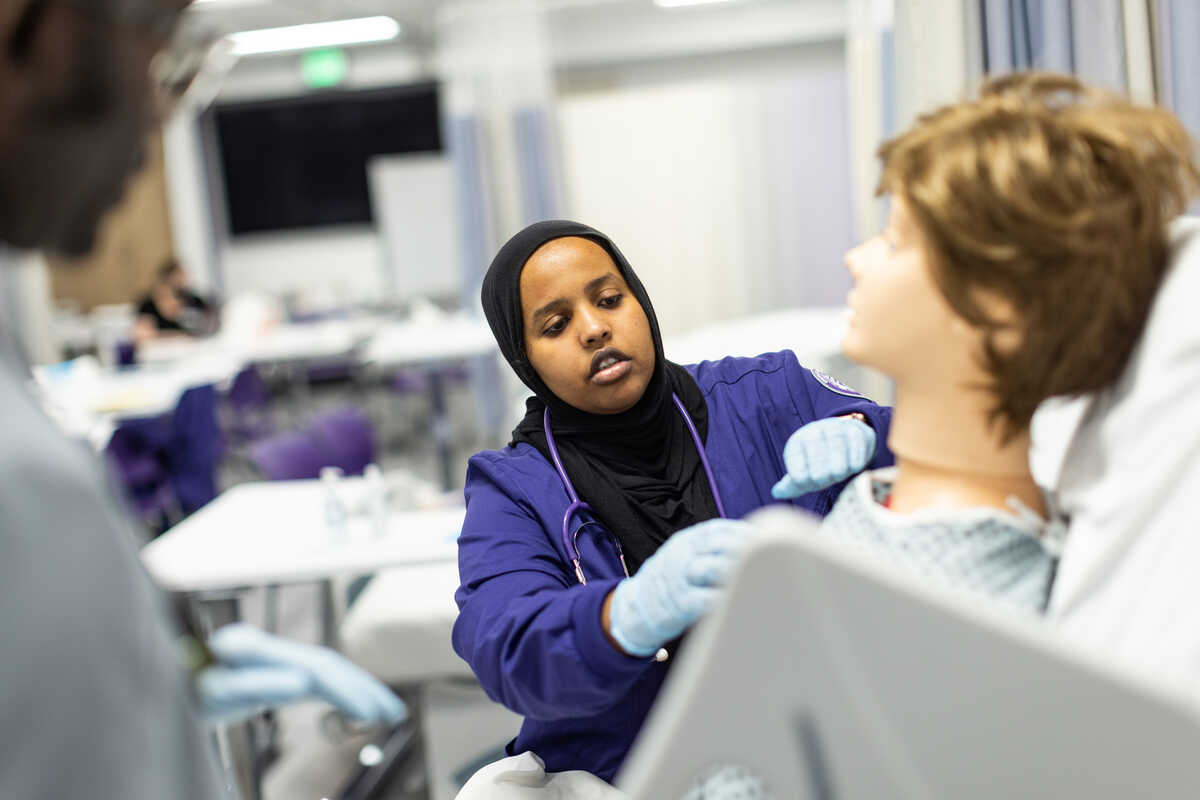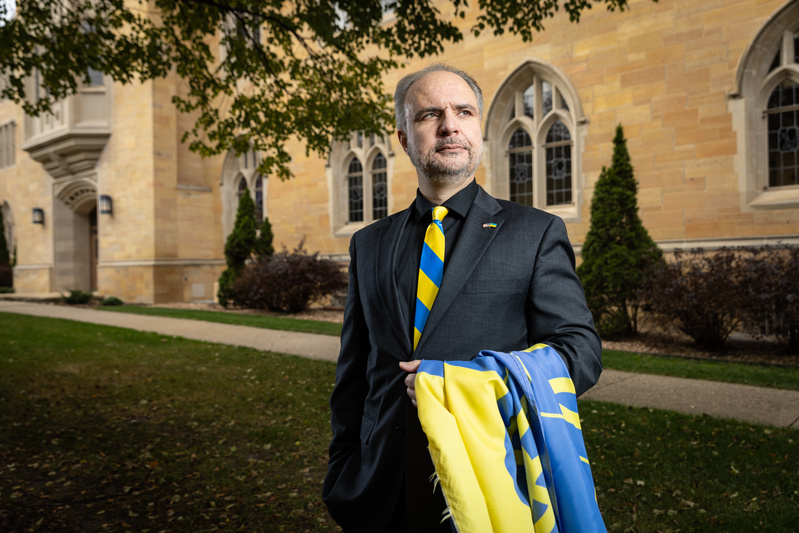Pediatrics patient Hal is feeling dizzy. Even more concerning, Hal is having trouble feeling one of his legs. Today, he’s being treated at the Susan S. Morrison School of Nursing, and like some pediatric patients in a typical medical setting, Hal is showing signs that he’s uncomfortable with his surroundings.
“Don’t touch me,” Hal tells Heather Anderson, assistant director of nursing simulation education.
Thankfully, Hal isn’t really injured. Despite being an incredibly convincing lifelike young boy – Hal is able to talk, move his eyes and even breathe – this pediatric patient is only a hyper-realistic simulator.
Hal and nine other simulators have the brand new, multimillion-dollar Center for Simulation as their permanent home. Located in the recently remodeled Summit Classroom Building, these simulators are destined to play a key role in educating a new generation of nurses at the University of St. Thomas.
“Technology today is like air, it has to be incorporated into nursing education,” said Dr. MayKao Y. Hang, vice president of strategic initiatives and founding dean of the Morrison Family College of Health.
At first glance, you might be tempted to refer to Hal and his fellow simulators as mannequins. But after spending a few minutes with this complex technology, you’ll realize Hal is anything but.
Hal can have his blood glucose levels tested when his finger is pricked. Hal can have a chest tube inserted through his abdomen. Hal’s skin can even change color, allowing him to illustrate signs of trauma or a neurological condition.
Hal is far from a mannequin. He is a complex, simulated teaching tool ready to provide nursing students with the skills they need for real-world patient care.
Weaving simulation into nursing education
From the very beginning of planning for the Susan S. Morrison School of Nursing, leaders knew high-fidelity simulation would be a key piece to curriculum. In fact, students will complete up to 50% of their clinical experiences in St. Thomas’ simulation.
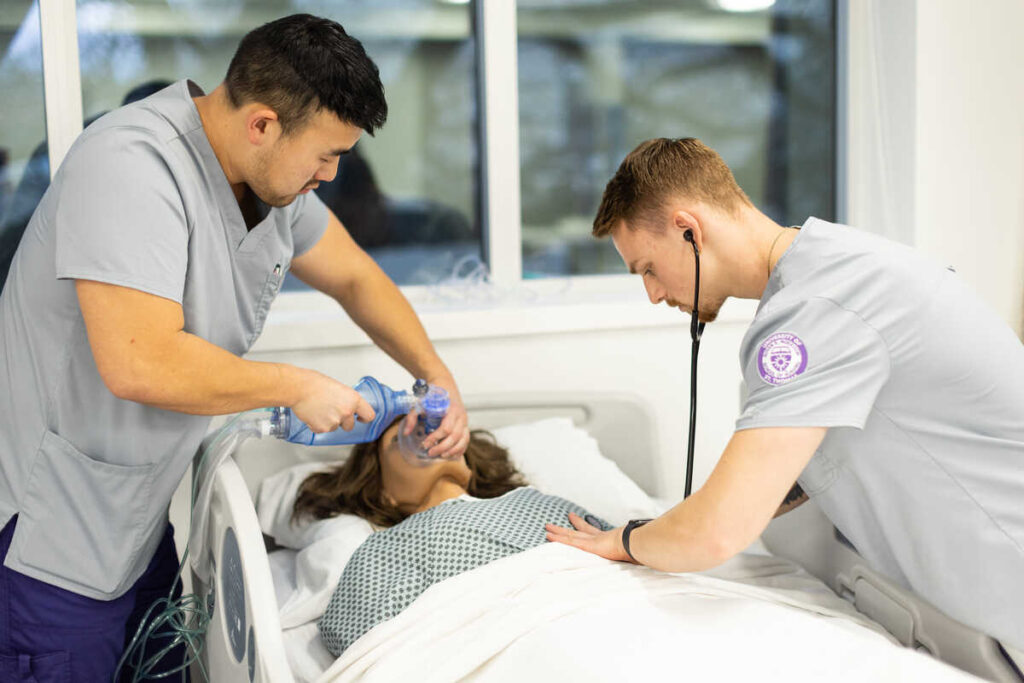
“The possibilities are endless, which is one of the things about simulation that I find just extremely exciting,” Anderson said. “We can put students into any kind of situation.”
Clinical courses will incorporate simulation for a wide range of patients, from newborns through end of life. And when it comes to caring for those simulated patients, instructors can put their students through countless variations of real-life circumstances.
Experiences can be as straightforward as administering medication. And they can increase in complexity to tasks such as assisting in the delivery of a baby.
Just across the hall from Hal, you’ll find a simulator by the name of Noelle. Noelle is designed to deliver a baby (she’s usually joined by her simulator newborn, Tory) and teach students how to manage pregnancy complications and postpartum emergency scenarios.
“It’s not quite like having a live human being, but it’s pretty darn close,” Hang said. “To have something that real for a student to work with is special because they’re able to gain that experience and confidence before they actually go out into the field placement.”
Creating an in-depth experience
The Center for Simulation is divided into two main areas, a skills lab – set up to resemble an emergency ward or hospital setting – and four simulation suites – which can be transformed to resemble a variety of inpatient and outpatient spaces.
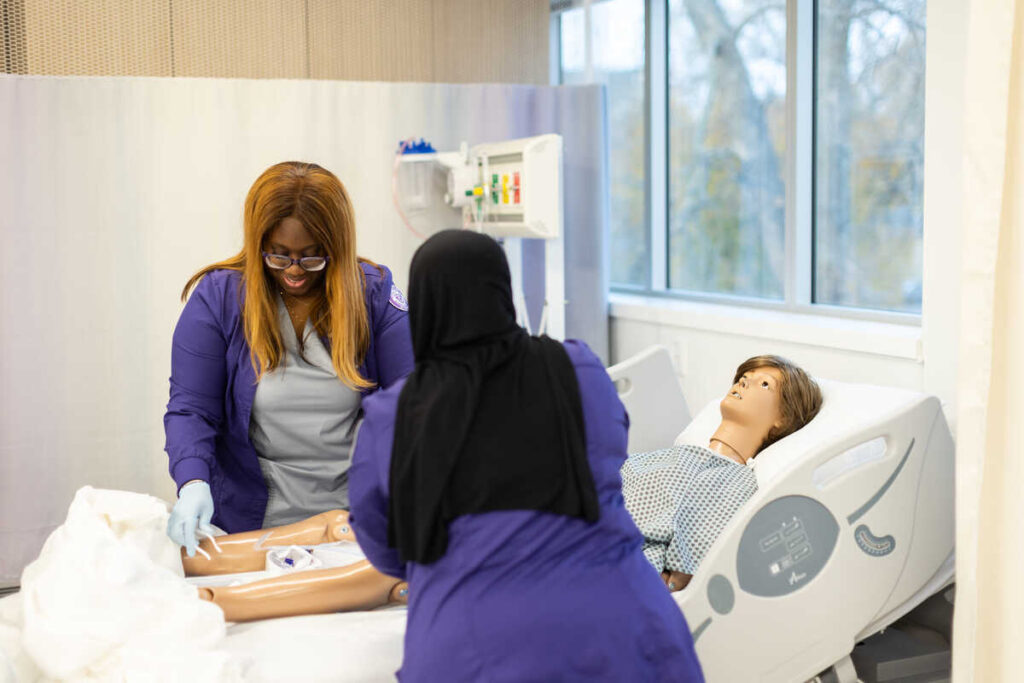
Each simulation suite comes complete with a control room, the simulation space, and a debriefing room. Instructors control the simulator from behind glass, programming the conditions while nursing students tackle each situation anew. The entire experience is recorded from a variety of camera angles and that recording can then be used to debrief students next door.
“We designed the spaces so that each student can somewhat overlook the fact that they’re not in an actual health care facility,” Anderson said. “We put a lot of focus into those different rooms to make sure that they would be functional, but also portray that sense of realism that our students need to have to be able to immerse themselves in these experiences.”
That sense of realness is what makes for “high-fidelity simulation.” And if done well, it can prove to be a game-changer in nursing education.
“If you devise and design simulation in a way that’s really close to reality, it boosts the confidence of students who, once they actually go into their clinical placements, are much more prepared to actually work with live patients,” Hang said.
Using simulation to bolster learning
The curriculum for St. Thomas nursing students calls for them to complete the other 50% of their clinical experiences off-site, in real-world settings. These clinical placements are a crucial part of a nursing student’s educational experience. However, learning in the field does come with several shortcomings that simulation hopes to address.
On location in the field, students may encounter downtime in providing patient care, while each situation is tough to predict. It’s also challenging for students to realistically take part in certain complex medical situations, such as mothers giving birth or emergency care.
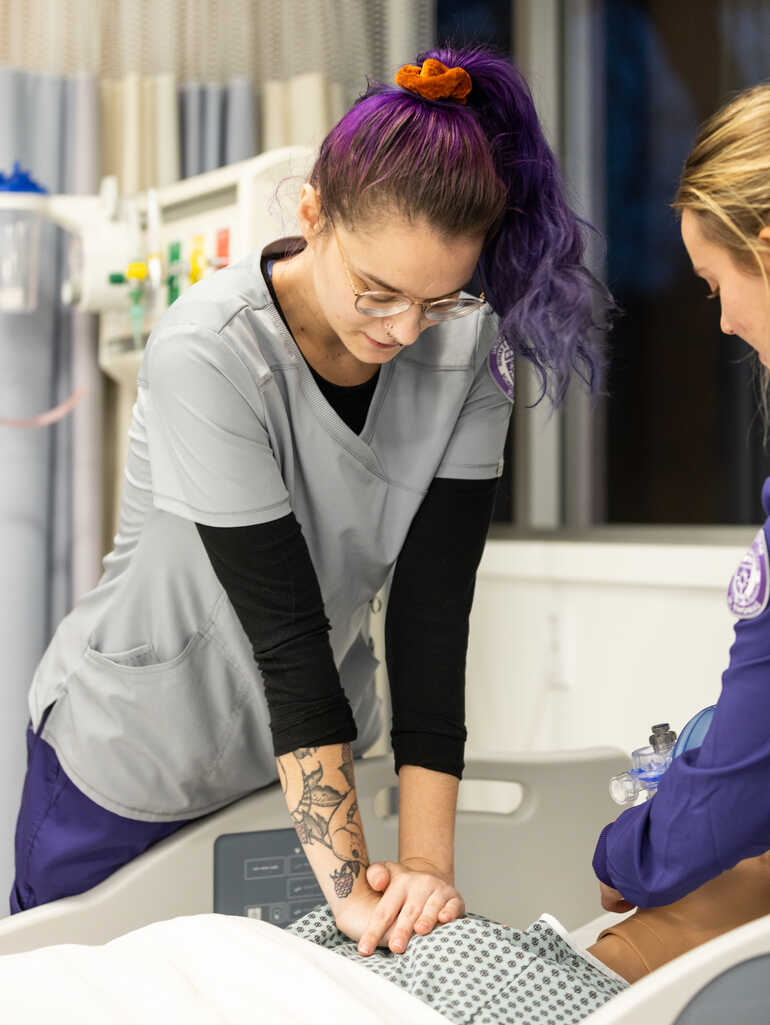
“Simulation allows for much more concentrated, deliberate and intentional experiences for students,” said School of Nursing Founding Director of Nursing Dr. Martha Scheckel. “With simulation you can create an in-depth experience and an in-depth look at how the students are performing.”
Simulation in nursing education is growing, and research points to strong learning outcomes for students, which translates into quality care. St. Thomas clinical partners have expressed their excitement at how the Center for Simulation will be used to educate students.
“If you optimize the use of simulation, you’re actually going to get a better nurse on entry into the field,” Scheckel said. “There’s ongoing research in simulation, but we certainly have lots of validation that this is the right direction to go with our students.”
The School of Nursing’s first cohort of students began taking courses in the fall 2022, and this spring, they’ll begin using the Center for Simulation in earnest. For master’s student Morgan Williams ’22, simulation has already played an important role in her coursework.
“To be able to walk into the skills lab and have it set up like a fully working hospital unit … it’s so much more than watching a YouTube video – it allows us to be really hands on,” Williams said.
So far, Williams has used the Center for Simulation to brush up on various techniques. She’s taken the pulse of patients, monitored their heartbeat and listened to their breathing. Each interaction builds confidence.
Morgan Williams, MASTER's STUDENTIt can be something as simple as just talking to a patient and building a rapport with them. To practice those hands-on skills and be able to walk into an actual patient room on day one with confidence, it’s one of the most valuable things St. Thomas is giving us.
The future is limitless
As nurse educators and students embrace all that the Center for Simulation can become, the same leaders who developed its initial plan are already looking ahead to the future. For example, there are plans to partner with the School of Social Work in simulation-based education, which also calls the Summit Classroom Building home. Virtual simulation is being deployed as an additional resource. And the simulators themselves will get updates as technology evolves.

“Technology is a moving target and the field of simulation is constantly, rapidly changing,” Scheckel said. “And so, just like any other technology, we must ensure that we’re keeping up.”
No matter what the future for the Center for Simulation may hold, leaders pledge to stand true to their mission of providing an outstanding learning environment at St. Thomas.
“We want our students to transform the world,” Hang said. “We want them to believe that they can and it starts here.”
